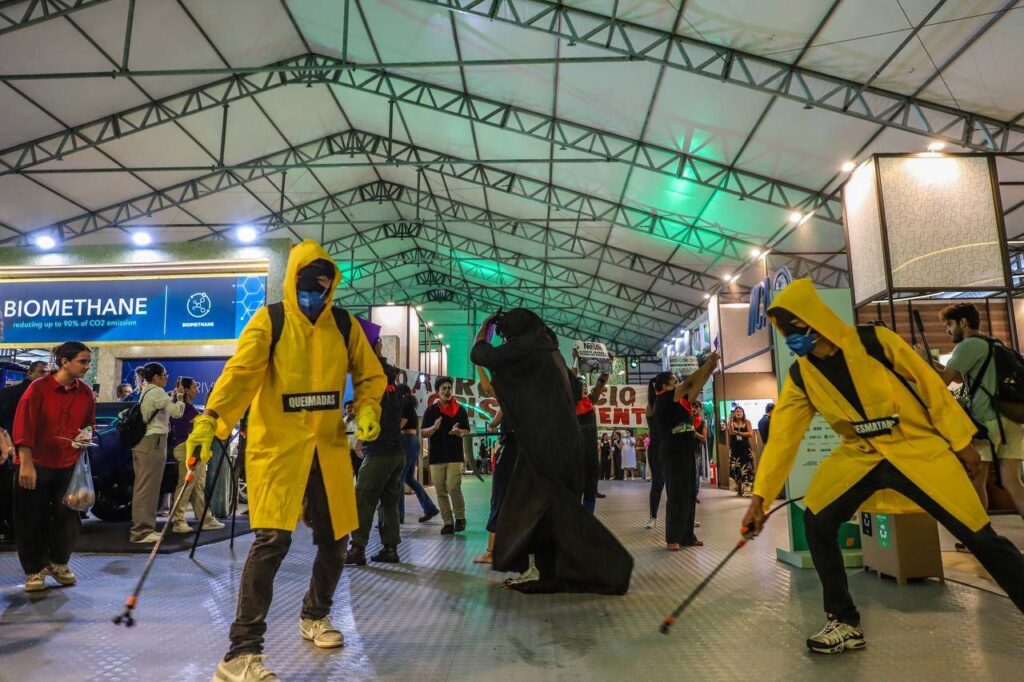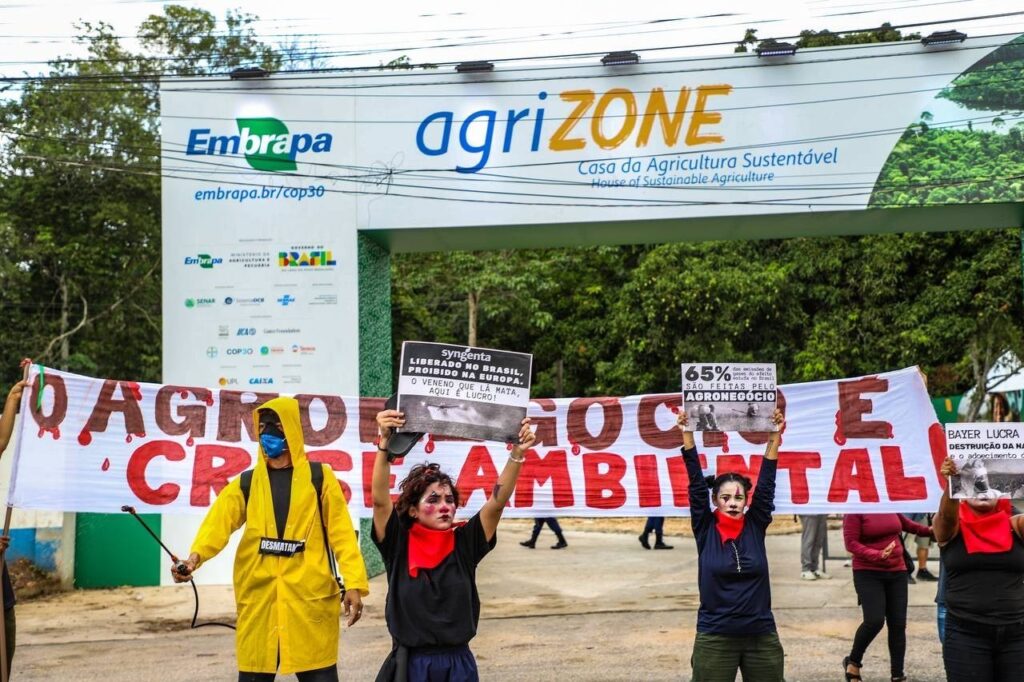A 2015 report by the Canadian pro-development group Resource Works cynically telegraphed the growing recognition by industry a decade ago that major projects like liquified natural gas (LNG) need First Nations partners to accelerate regulatory approvals in British Columbia.
“The value the band will bring to the table by getting them to support you will save you millions in the regulatory process, both in the beginning and on the ongoing operation, because you’re always needing a permit to do something,” Roger Harris, the former British Columbia Minister of Forests, stated in the report about the advantage to extractive industries to have Indigenous partners to apparently ward off regulatory oversight. “Having these guys as partners makes the government just go away.”
Fast forward 10 years and numerous LNG projects now have prominent Indigenous partners, at least on paper, who are also potentially on the hook for financial losses should those projects fail. A recent report from the Yellowhead Institute highlights the economic risks to First Nations equity investors from cost overruns, limitations of government loan guarantees, and shifting LNG economics.
A recent example is the Ksi Lisims LNG terminal and the associated 900 kilometer Prince Rupert Gas Transmission (PRGT) pipeline that will be fast-tracked by Prime Minister Mark Carney’s government, justified in part by the equity participation by the First Nation Nisga’a Lisims Government.
Subscribe to our newsletter
Stay up to date with DeSmog news and alerts
The truth behind the public pronouncements of Indigenous LNG ownership is considerably less clear. Specific First Nations equity stakes in these projects are not typically publicly available information, and the Ksi Lisims LNG terminal portion of the project is currently wholly owned by Texas-based Western LNG.
“I think this is all word play,” Tara Marsden, Gitanyow Wilp sustainability director told DeSmog. “You know, they use the term equity… but what it really is is debt. And it’s taking on debt for nations who are already extremely economically vulnerable.”
Marsden questions the current enthusiasm of provincial and federal governments for First Nations to invest in LNG projects. “It really appears like some form of predatory lending, where you have nations who are not experienced in this industry, who may have some advisors, but what is their interest in this?”
The ‘Majority’ Agreed
The Nisga’a Lisims Government unsurprisingly has a different perspective. Their CEO Andy Robinson recently questioned the motives of some opposed to the Ksi Lisims LNG terminal, telling the audience at an annual conference founded by Resource Works, “I want to work for an NGO one day and be paid to walk around on the roads waving the flag and getting $80,000 a year from some American.”
Robinson highlighted a process of local meetings within the Nisga’a Nation as a rationale for moving forward with the LNG project, while conceding that not everyone was supportive. “Who approved this?… All 8,000 people. Not all of them agreed with it, but the majority did,” he said.
The federal government has been encouraging First Nations investment in fossil fuel projects through a $10 billion Indigenous loan program, which concerns Marsden.
“What I’ve noticed with the Indigenous loan guarantee program is that it is geared more towards more controversial projects in the energy sector, more fossil fuel-type projects and where there is opposition [from other First Nations],” she told DeSmog.
She sees this “a way of cementing Indigenous consent” of some First Nations while ignoring opposition of others. For example, the Ksi Lisims project has been challenged in court by the Gitanyow Hereditary Chiefs, as well as the Lax Kw’alaams, Metlakatla ,and Haida Nations.
“I think if government wants to go and have big press conferences and say that they’re nation building, they need to be transparent about what those partnerships actually are and who has been involved on behalf of their nations,” said Marsden, citing the lack of clarity on specific Indigenous ownership of LNG projects like Ksi Lisims.
“How much of this is being disclosed? If it’s not being transparently transacted, then how safe does the federal government feel in backstopping this with taxpayer dollars?”
Indigenous Nations Have Equity Ownership Risks
Despite this lack of transparency, Indigenous equity partners on LNG projects may be exposed to financial risks from debt-servicing payments, cashflow required for investor dividends, or dealing with default if the project is abandoned.
A worrying sign flagged by the Yellowhead report is the lack of long-term shipping agreements for BC LNG developments such as Ksi Lisims, meaning many of these projects rely instead on volatile spot pricing. Creditors typically demand higher interest rates in these cases due to increased economic risks.
Other unknowns include long-term global demand, regulatory changes in Canada or of overseas customers, and the potential need to refinance given that LNG megaprojects often vastly exceed their original estimates.
The PRGT was originally budgeted at $5 billion in 2014 has since ballooned to $12 billion. The associated Ksi Lisims LNG marine terminal is estimated to cost an additional $10 billion; however, some observers believe it will ultimately cost much more. The mid-range estimate from the International Institute for Energy Economics and Financial Analysis for the terminal is $26 billion, meaning the entire project could cost an eye-watering $38 billion.
TC Energy’s Coastal Gaslink pipeline in British Columbia likewise exceeded original estimates by 130 percent. Cost overruns result in higher pipeline tolls to cover capital expenses, further undermining long-term economics.
Nations Could Be Responsible for Billions
How exposed are First Nations to financial risks from declining LNG economics? The Yellowhead report assumed a scenario where the Nisga’a Lisims Government and Western LNG each share 50 percent ownership of the PRGT project.
If cost overruns are comparable to the Trans Mountain pipeline project, PRGT could cost up to $30 billion. With 80 percent typically budgeted in repayable loans, the Nisga’a Lisims government would need to provide $3 billion in equity financing.
If the PRGT failed due to a global LNG glut or pipeline tolls unable to cover capital costs, the stranded Nisga’a Lisims equity stake could wipe out 30 percent of the $10 billion federal Indigenous loan guarantee program. According to the Yellowhead Institute report, “depending on the risk protections in the partnership agreement, Nisga’a Nation could be left with lost revenue, stranded infrastructure, and land remediation costs.”
These economic risks are real according to a recent analysis by the International Institute for Sustainable Development (IISD) warning of a looming global glut of LNG. “An oversupply of LNG is widely expected, potentially as early as next year, with a massive wave of new projects coming online around the world, especially in the U.S. and Qatar,” IISD policy advisor Steven Haig told DeSmog.
“Meanwhile, many importing countries are shifting away from expensive, imported LNG and towards cheaper, more reliable renewables,” he said. “So when it comes to the economic benefits of LNG, Canada is late to the party, and the party’s almost over.”
The Carney government is touting the billions in taxpayer dollars it’s making available for First Nations to borrow for LNG investments as economic reconciliation. Marsden has a different view. “I think that what we’re seeing now is the federal government and the provincial governments to a smaller degree … laundering money through indigenous people to provide fossil fuel subsidies.”
Governments and industrial projects come and go. The Yellowhead report notes that certain things seem to stay the same.
“Colonialism has always been about the exploitation of lands and extraction of their resources,” the report states. “Indigenous dispossession is required for colonial wealth generation expansion, though the strategies may change through time.”
Drew Harris of the Gitxsan and Wet’suwet’en suggests it is “the same old colonization tactics.”
Subscribe to our newsletter
Stay up to date with DeSmog news and alerts






